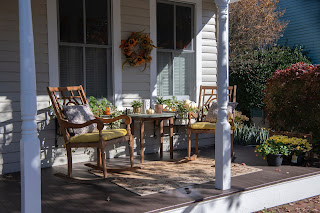When it comes to selling your home, preparing the exterior can be just as important as preparing the interior. The outside of your home is the first thing potential buyers see, and it can greatly impact their first impression of your property.
Luckily,
there are several low-cost outdoor improvements that will make your home more
appealing to buyers.
First, consider adding some potted plants or flowers to your front porch or entryway. This can help add some colour and life to your home's exterior, and create a welcoming atmosphere for potential buyers. Even in winter, small potted evergreens can have an impact.
Next,
consider cleaning up your landscaping. This can include trimming overgrown
bushes and trees, mowing the lawn, and removing any dead plants or debris. By
doing so, you can make your home look well-maintained and attractive to
potential buyers.
You
may also want to consider adding some outdoor lighting to your property. This
can include adding some solar-powered lights along your driveway or walkway, or
even adding some outdoor string lights to your patio or deck. Outdoor lighting
can create an inviting atmosphere, and make your home look more attractive to
potential buyers.
Finally,
consider giving your front door a fresh coat of paint. Your front door is a
focal point of your home's exterior, and painting it will make a big
difference. If you’re changing the colour, be sure to pick one that complements
the façade.
These outdoor improvements don’t cost much, but will increase your home's curb appeal, which is proven to help sell your property faster and for a better price.
Need more advice on how to create the “wow” factor in your home when you sell? Call today!













































